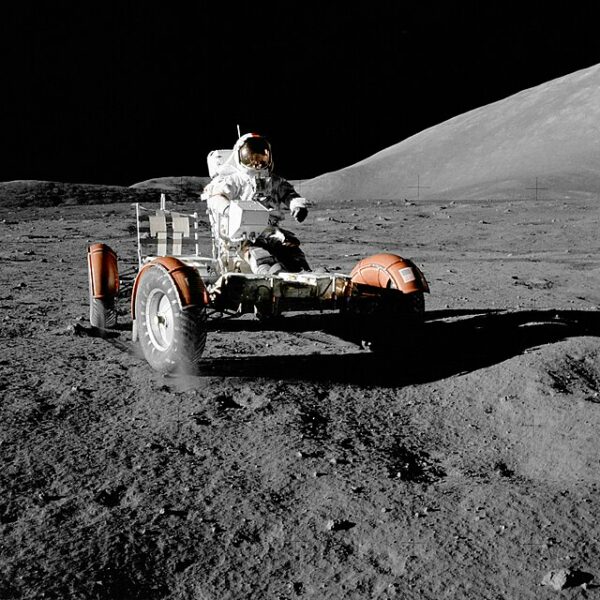The history of the lunar rover, an extraordinary feat of engineering, began with its debut on the moon on July 31, 1971, during the Apollo 15 mission. The Lunar Roving Vehicle (LRV), also known simply as the lunar rover, was a crucial development for the Apollo program, enhancing the astronauts’ ability to explore and conduct scientific experiments on the lunar surface.
Apollo 15: The First Use of the Lunar Rover
Apollo 15 marked the first mission to carry the lunar rover to the moon. The LRV was designed by Boeing and General Motors, weighing about 210 kilograms (463 pounds) and capable of carrying over 490 kilograms (1,080 pounds) including two astronauts, their equipment, and lunar samples. The rover’s electric motor was powered by non-rechargeable silver-zinc potassium hydroxide batteries, enabling it to travel up to 92 kilometers (57 miles) at a maximum speed of about 13 kilometers per hour (8 mph).
Enhancing Lunar Exploration
The inclusion of the lunar rover allowed astronauts David Scott and James Irwin to traverse greater distances than previously possible. During Apollo 15, they covered about 27.9 kilometers (17.3 miles) and were able to explore regions far beyond their landing site, such as the Hadley Rille and the Apennine Mountains. This extended range facilitated the collection of a diverse array of geological samples, significantly enhancing the scientific return of the mission.
Subsequent Missions: Apollo 16 and Apollo 17
The success of the lunar rover in Apollo 15 led to its use in the subsequent Apollo missions. In April 1972, Apollo 16 astronauts John Young and Charles Duke utilized the LRV to explore the Descartes Highlands. They traveled approximately 26.7 kilometers (16.6 miles) and conducted numerous scientific experiments. The rover’s ability to transport tools and instruments, including a portable magnetometer, was instrumental in analyzing the moon’s magnetic properties.
Apollo 17, the final Apollo mission in December 1972, saw astronauts Eugene Cernan and Harrison Schmitt use the LRV to traverse the Taurus-Littrow valley. They covered a distance of about 35.7 kilometers (22.2 miles), the longest of any Apollo mission. The lunar rover’s flexibility allowed them to visit diverse geological formations, such as the South Massif and the North Massif, contributing to a wealth of scientific knowledge.
Design and Technical Specifications
The lunar rover was an open-frame vehicle designed to operate in the moon’s low-gravity environment. It featured a unique system of wire mesh wheels with titanium threads to provide traction on the lunar surface. The rover was equipped with a navigation system, which included a sun-shadow device, a directional gyro, and an odometer, enabling astronauts to determine their position relative to the lunar module.
The LRV’s steering system was highly maneuverable, allowing both front and rear wheel steering, which was crucial for navigating the moon’s rugged terrain. Despite the lack of a sophisticated suspension system, the rover’s flexible chassis and wire wheels absorbed shocks effectively.
Impact and Legacy
The lunar rover’s contribution to lunar exploration was immense. It transformed the scope of scientific research conducted during the Apollo missions by allowing astronauts to travel farther, collect a wider variety of samples, and conduct more comprehensive experiments. The data and samples collected by the lunar rovers have provided invaluable insights into the moon’s geology and history, influencing our understanding of the solar system.
In the decades following the Apollo missions, the lunar rover has inspired the design of other planetary rovers, such as the Mars rovers developed by NASA. The technological advancements and lessons learned from the LRV continue to inform and drive innovations in space exploration.






